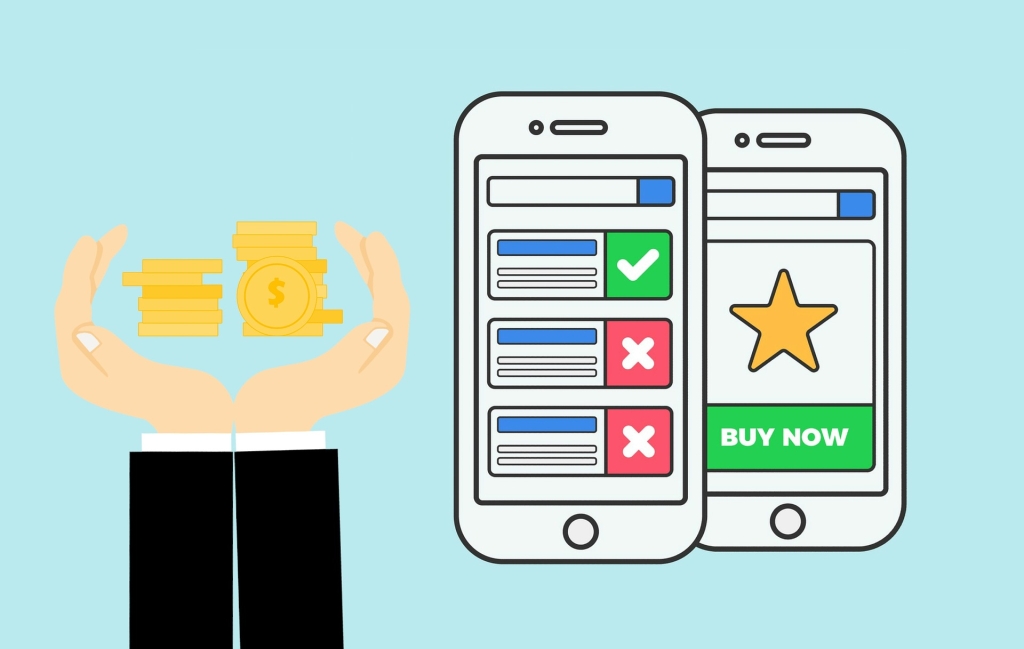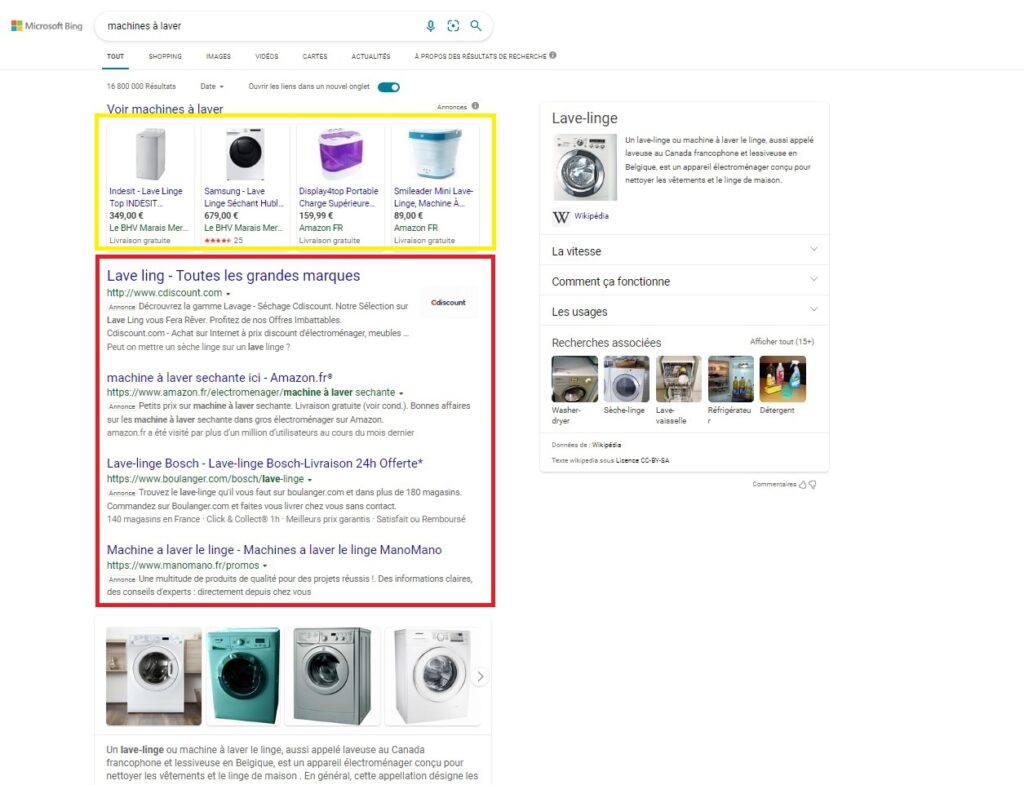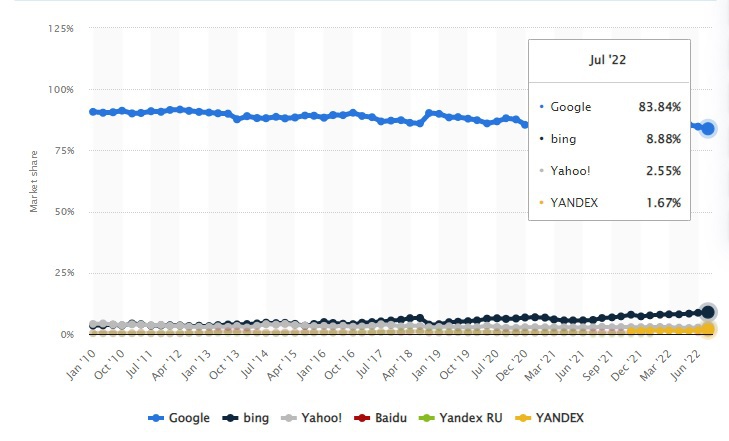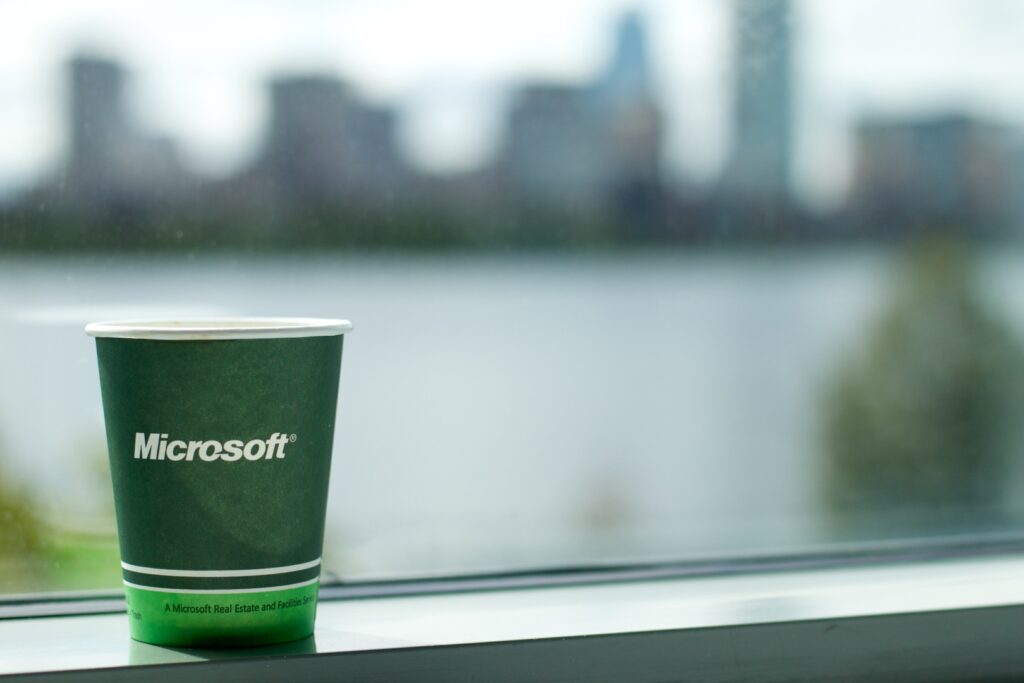While it only holds 7 percent of the global market share, Bing still remains the second most popular search engine – right behind Google, obviously. Something companies have come to understand as they keep investing more and more into Microsoft Ads, adding up to a $10B revenue for the firm in 2021 alone. Thus, implementing Microsoft Advertising as part of your SEA strategy is an interesting way to reach a different, complementary audience to what Google can provide, and at a much more reasonable cost. What is Microsoft Ads? How does it work? Let’s find out about how you can launch your own advertising campaign with Microsoft.

What Is Microsoft Ads?
What is Microsoft Ads, exactly? It refers to the ads displayed on the search engine Bing and on Microsoft’s network of partners, using the same principles as Google Ads. The network itself is known as “Microsoft Advertising”, a name it adopted in 2019 to shift focus towards the brand rather than the engine – its former designation being “Bing Ads”. This also allows users to identify “Made in Microsoft” services right away. The name change highlights the fact that sponsored campaigns are shown both on Microsoft’s search engine and on partnering sites – Bing, Yahoo!, and AOL – not exclusively in the Bing SERP.
Much like Google’s sponsored links or ads, Microsoft Ads rely on the PPC (Pay-Per-Click) model, also called CPC (Cost-Per-Click). The ads are displayed in answer to search queries formulated by the users, based on the keywords selected for the bid. The advertiser only pays when the users effectively click the links or banner ads.
Microsoft Ads, which highlight products or services, can be showcased in three different places on Bing’s search result page. At the very top, at the very bottom, and/or along the sidebar, in addition to organic links. They can also appear as insets, as shown in the example below.

From there, Microsoft Ads offers many features and filters that can be used to control how the ads are displayed, such as “on mobile only”, for instance.
What Are the Different Types of Microsoft Ads?
Microsoft Advertising allows advertisers to create advertising campaigns based on different types of approaches. Here’s an overview of the various possibilities.
- App Install Ads are sponsored links that send users to a dedicated store (Apple Store or Google Play, depending on the device they use, which is detected automatically) where they can download the advertiser’s mobile app.
- Dynamic Search Ads target queries by taking information from the content featured on the advertiser’s website (you can define whether it should be the entire site, or only certain categories or specific pages). They are created dynamically to provide relevant answers to the users’ queries.
- Product Ads are created from the advertiser’s product portfolio as set up through Microsoft Merchant Center. They display personalized images, along with information about the products (such as the price).
- Audience Ads are a native ad format displayed within various types of non-search-related content on the Microsoft Audience Network. Because they are seamlessly integrated in their environment, these formats that don’t interrupt the browsing experience and have a high conversion potential.
- Multimedia Ads rely on large-size visuals designed to capture the users’ attention. They are displayed alongside the premium links in the SERP’s sidebar, without blocking out the text link areas.
- Responsive Search Ads define optimal combinations crafted from a selection of titles and descriptions to adapt ad texts to targeted audiences and to the nature of their searches. Advertisers can provide up to 15 titles and 4 descriptions, and Microsoft Ads tests out the different combinations to identify which ones perform the best (and set aside the ones that don’t work).
- Bing Smart Search Ads are currently only available in English. They are similar to traditional text ads on the Search network, but with a format suitable for Smart Search on Windows 8.1.
Note that Expanded Text Ads (a mobile-optimized format) were retired as of August 2022. You can no longer create or modify them, but ads launched prior to this date will continue to work. This is Microsoft’s way to encourage advertisers to switch to Responsive or Dynamic Search Ads.
Why Integrate Microsoft Ads to your SEA Strategy?
As stated in our introduction, the Bing search engine only amounts to a market share of 7%, far behind Google (8.88% in July 2022, against Google’s 83.84% – see graph below). It’s a bit less than that in the UK, with a 4.68% market share against 93.66% for Google.

(Source : Statista)
Although these figures make Microsoft the second actor on its market (ahead of all others, such as Yahoo! or Yandex), one could legitimately wonder whether using Microsoft Ads in SEA strategies is even worth it. Yet, the answer is a resounding yes, for four main reasons.
SIGNIFICANT TRAFFIC
While it’s true that Bing has a much smaller audience than Google has, it’s not insignificant either – the estimated number of monthly Bing searches on desktops is estimated to be over 300 million. Working with Microsoft Ads is therefore an opportunity for advertisers to reach new audiences and to generate additional traffic. It is all the more interesting that this share of the audience is stable over time, as evidenced by the graph below.
A QUALIFIED AUDIENCE
Though Bing’s audience is different from Google’s, it is also more qualified in some specific areas. Evidence shows that Microsoft Bing users are older (35+ on average) and that they enjoy a more privileged socio-economic status. They are more likely to click the ads (as they are less likely to be able to tell sponsored links apart from organic links), and they spend more money on Bing than elsewhere (source). All this speaks in favour of an SEA strategy that integrates Microsoft Ads.
EFFECTIVE AUDIENCE TARGETING
When it comes to digital advertising, targeting is a key element for performance. And Microsoft Advertising doesn’t advocate for half-measures. They rely on a targeting solution that utilizes artificial intelligence to better understand search intent. It does this by collecting data via the tools available in the Microsoft Ecosystem (Outlook, Skype, LinkedIn…). As for advertisers, they can refine their ad targeting by adjusting a number of settings: demographics, age, gender, location, device category, etc.
LOWER ADVERTISING COSTS
Finally, given that Microsoft Ads are much less popular than ads on Google, the cost for their advertising campaigns remains reasonable. Because the keywords are less competitive, the CPC is inevitably lower, which makes the cost per acquisition much more accessible. This means advertisers get to choose between investing much less on strategic keywords (better overall keyword performance) or making their advertising budget go a longer way by spreading it across a wider selection of queries.
Thus, Microsoft Ads allow businesses to launch paid search engine optimization campaigns they might not necessarily be able to afford on Google, where the costs are much higher.

How to Launch your First Microsoft Ads Campaign?
Are you ready to launch your first Microsoft Ads campaign? Here are the steps to follow to create a campaign and ad group with Microsoft.
1. CREATE AN ACCOUNT AND CONFIGURE YOUR CAMPAIGN
The first thing to do is to create an account on the Microsoft Advertising Platform, and then sign in. Once there, basic configuration requires…
- Indicating your campaign objectives (to generate traffic, to maximize your conversion rate, etc.)
- Giving your campaign a name (it is essential if you wish to identify it among others you might choose to create later)
- Selecting the language and location (where your ads should be shown)
- Selecting the currency used by the Internet users to see the prices
- Defining your budget for Microsoft Ads bids by selecting how you wish to pace your expenses (over the course of the day, or as quickly as possible).
2.CHOOSE KEYWORDS FOR YOUR MICROSOFT ADS CAMPAIGN
On Microsoft Advertising (Bing), ad campaigns are made up of several ad groups. For each group, you need to assign different keywords to determine when the corresponding ads will be shown. This implies that you should select them in advance based on the products or services you wish to sell.
To this end, you can draw a list of relevant queries that relate to your activities and offers, focusing on generic keywords.
There’s a way to make this task easier. Microsoft provides a tool called Broad Match, which lets you match keywords with queries formulated by the users. This keeps you from having to spend too much time creating lists, and mainly allows you to centre your budget around the best-performing terms. For example, by selecting the expression “best SUV”, your ad group will show up as an answer to queries like “SUV comparison”, “best cars”, or “van rental offers”.
CREATE YOUR ADS (AND USE EXTENSIONS)
As we mentioned above, it is possible to create different types of Microsoft Ads. In most cases, the fields to be filled out are the same: Title, ad text, and page URL (a model similar to Google Ads). For every ad, an overview is available on the interface.
Microsoft Advertising also allows you to add ad extensions. These are designed to offer more information to the users and improve the click-through rate. These extensions can have to do with:
- Displaying the price directly within the ad (only for ads displayed at the top of the Bing SERP)
- Displaying a phone number (the same for all users)
- Adding a visual element near the ad
- Taking location into account (which allows you to have the address of the brick-and-mortar shop closest to the user show up, along with a local phone number)
- Adding more text
- Adding one or several links (allowing the users to access specific pages on the website or web shop)
- Highlighting positive reviews posted by customers
- Promoting applications straight in the ads
- Displaying a dynamic website excerpt (to highlight products being sold on the site)
4. DEFINE YOUR BIDDING STRATEGY
Bidding strategies are a key part of how Microsoft Ads works. It’s all about fine-tuning your budget to your objectives and targeted keywords, so that your ads get displayed when the users type in specific search queries. By default, the payment model is enhanced CPC, with the platform adjusting the bids in real time. But it is possible to modify bidding values manually for each ad group.
The bidding budget is defined on a daily basis. It indicates to Microsoft Advertising how much you’re willing to spend to have your ads displayed for the keywords you’ve selected. Microsoft distributes your ads equally over the course of the day. With that said, they actually rely on a monthly budget calculated from the daily budget. This allows the platform to go over the daily amount agreed upon when necessary (making adjustments as needed so the monthly budget is never exceeded).
5. MONITOR THE PERFORMANCE OF YOUR CAMPAIGN
Advertisers are encouraged to add a Microsoft Ads pixel (a tracking tag that sends information to the platform regarding user activity) to their website’s or web shop’s pages. This allows you to monitor the users’ behaviour and to assess the performance of your campaigns.

IMPORT GOOGLE ADS CAMPAIGNS TO MICROSOFT ADS
Finally, know that it is possible to import existing Google Ads campaigns straight to the Microsoft Advertising platform and use them as part of Microsoft Ads. You just need to access the “Import” option on your Microsoft Advertising interface, connect to your Google account, and “accept” when the tool prompts you to launch the migration. Ads that have already been used on Google can be reused here, and you’ll just need to adjust them to fit the ad formats available.
Microsoft Ads offer many advantages when compared to Google Ads. Bing is the second most used search engine (giving you access to a wide audience). Its users are generally more qualified, the targeting options it offers allow you to build high-performance campaigns and, ultimately, the campaign itself will be cheaper thanks to less competition around the keywords. Just as many reasons that should encourage you to integrate Microsoft Ads to your SEA strategy!











